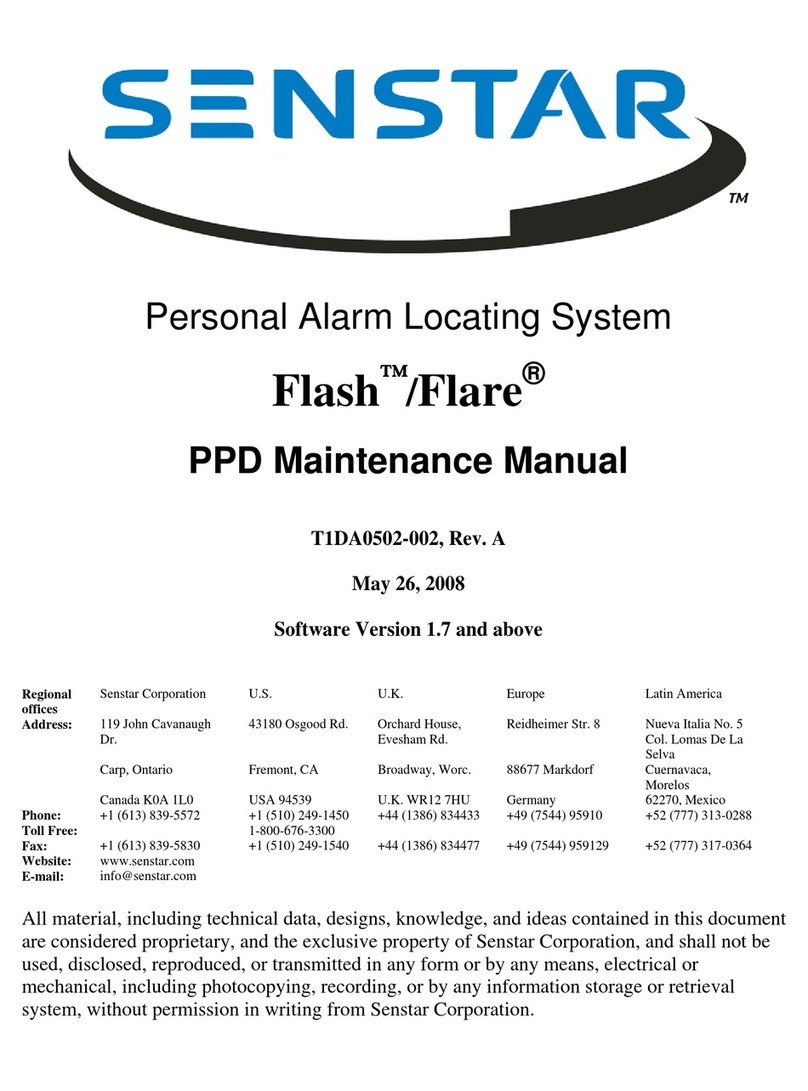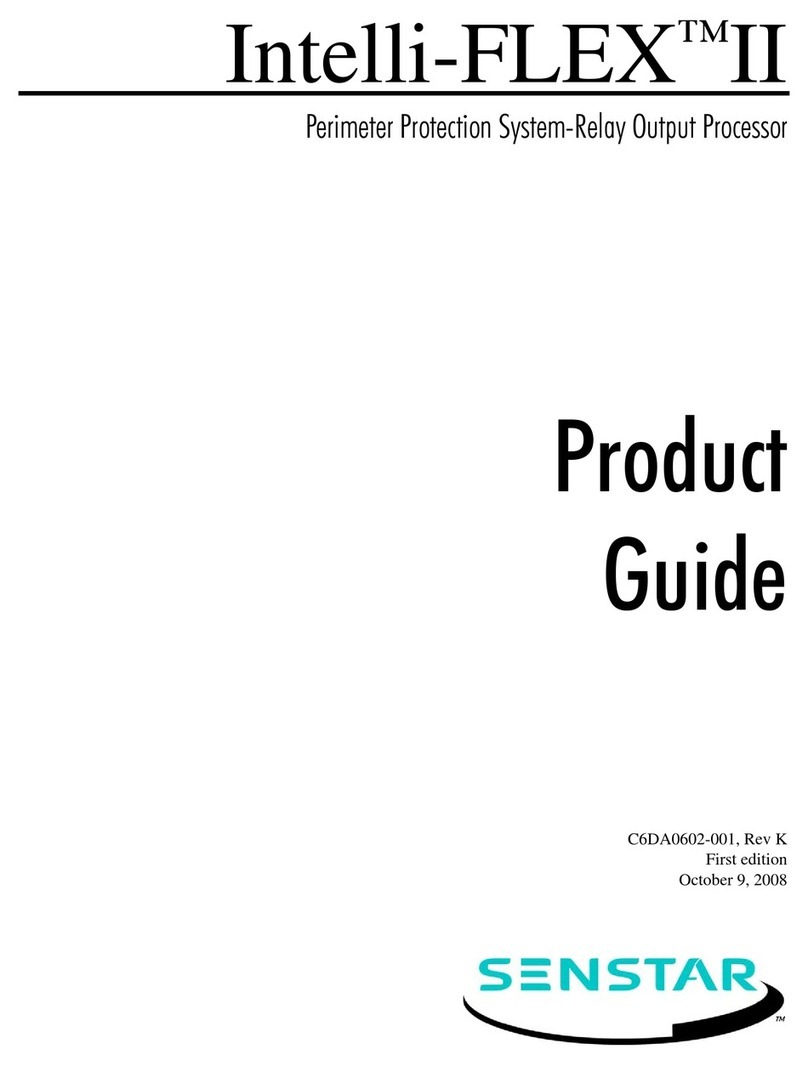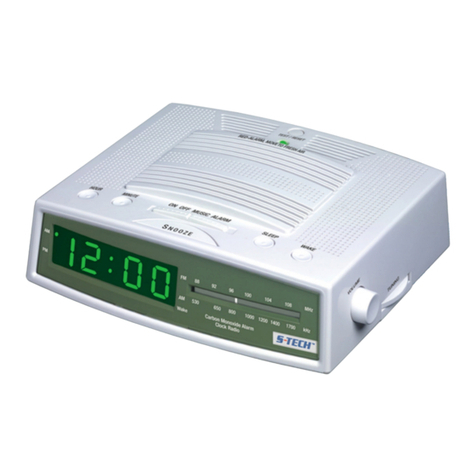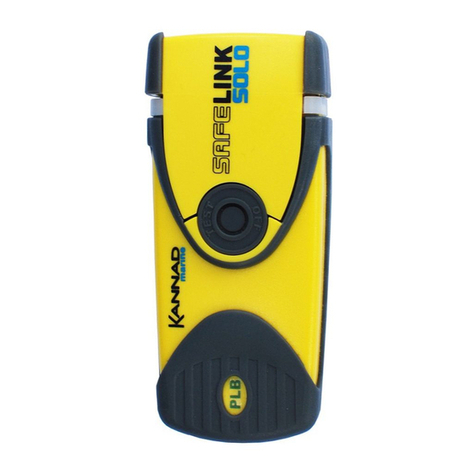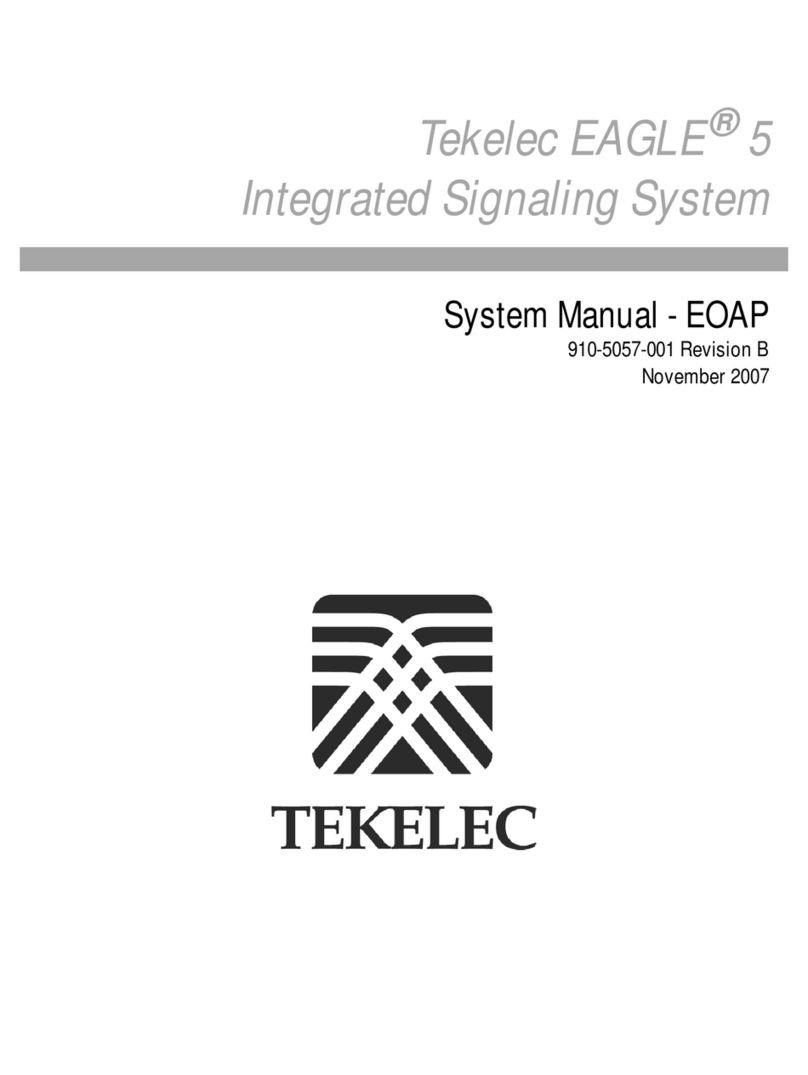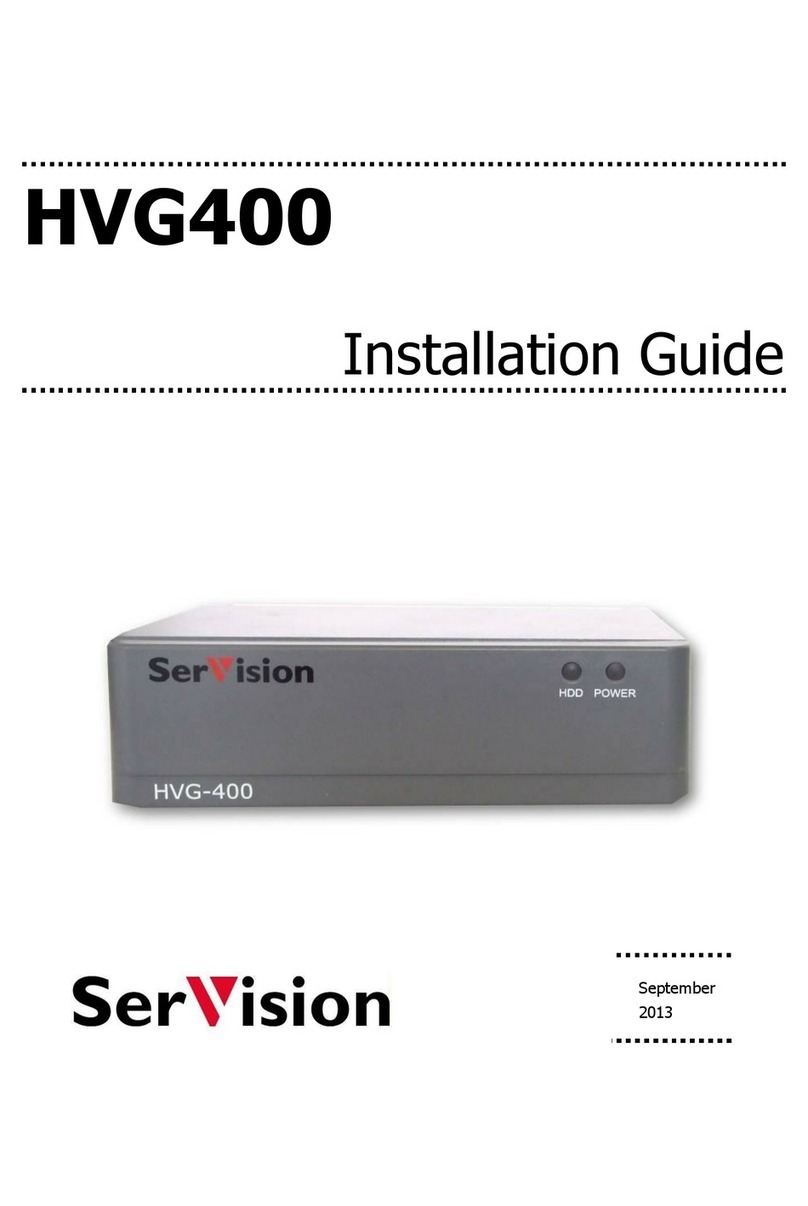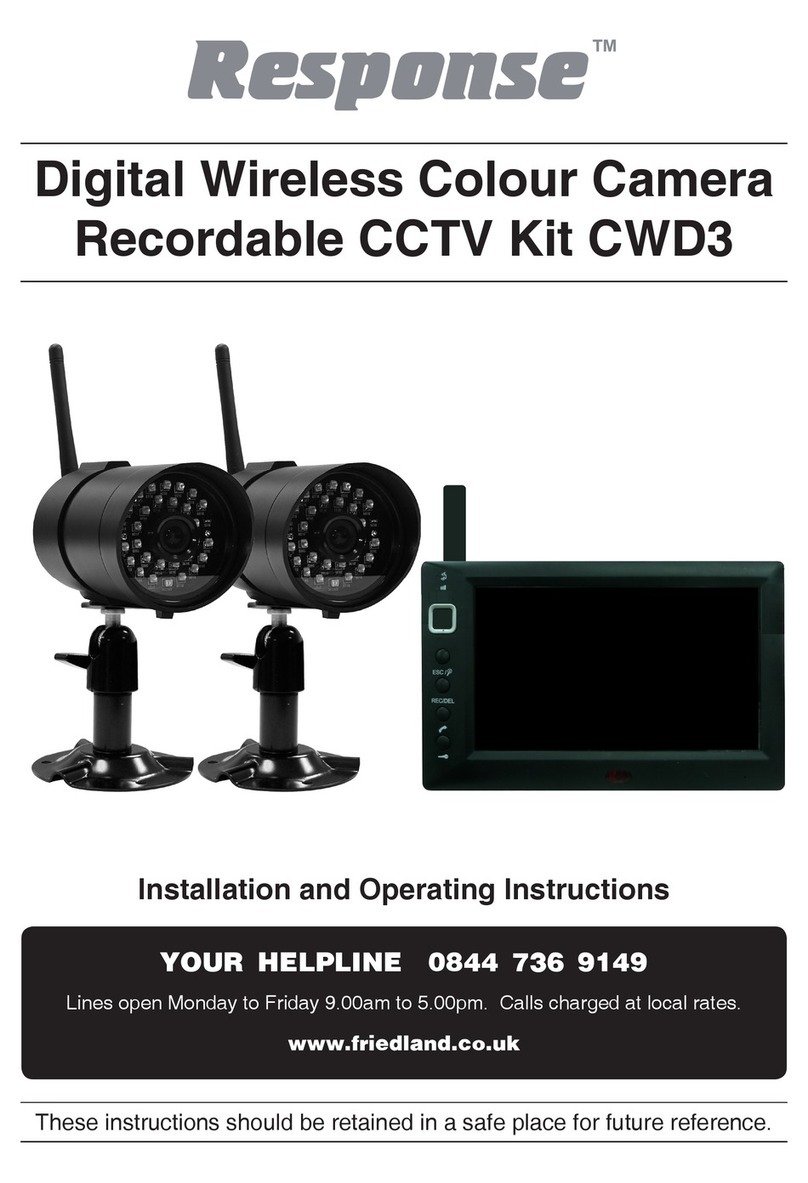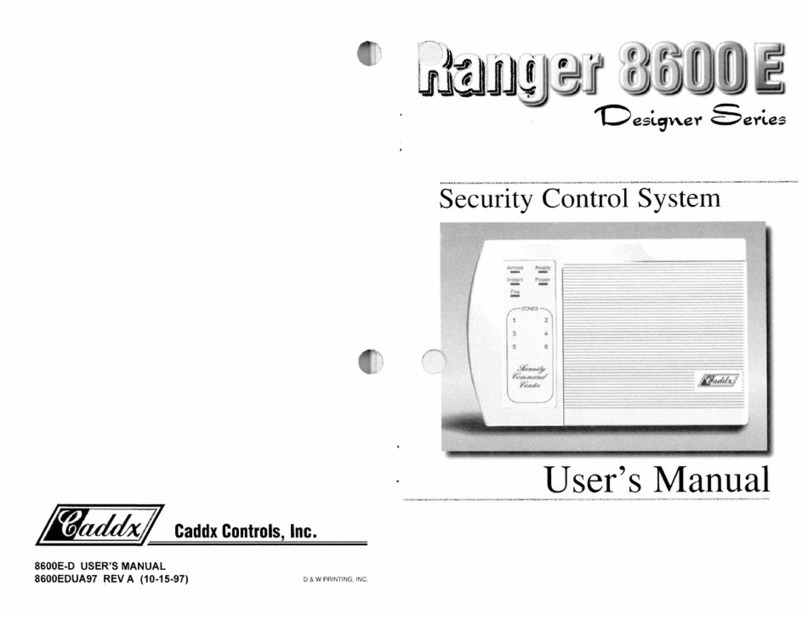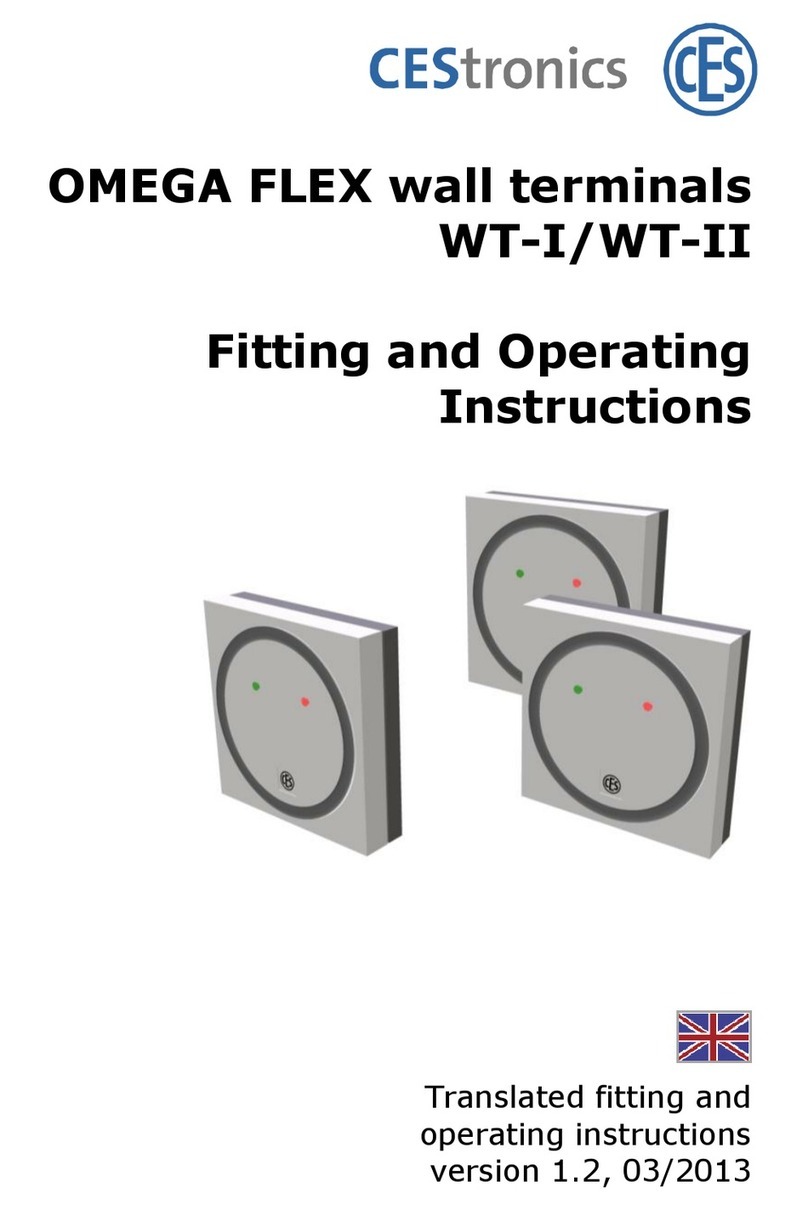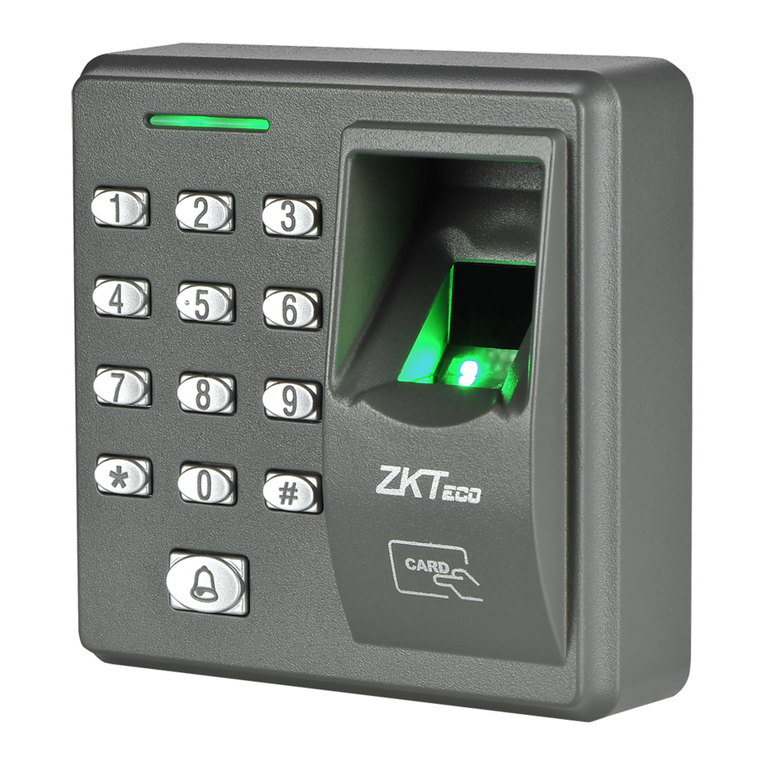SENSTAR 03RM Original operating instructions

03RM
Personal Alarm System
T0DA0202-001, Rev A
First edition
September 15, 2009
03RM
Installation &
Operation Guide

Senstar Corporation
119 John Cavanaugh Drive
Carp, Ontario
Canada K0A 1L0
Tel: +1 (613)-839-5572
Fax: +1 (613)-839-5830
Website: www.senstar.com
Email address: info@senstar.com
T0DA0202-001, Rev A
First edition
September 15, 2009
Senstar is a registered trademark, and the Senstar logo is a trademark of Senstar Corporation. Product names and Company
names used in this document are included for identification purposes only, and are the property of, and may be trademarks of,
their respective owners. Copyright © 2009 Senstar Corporation. All rights reserved. Printed in Canada.
The information provided in this guide has been prepared by Senstar Corporation to the best of its ability. Senstar Corporation is
not responsible for any damage or accidents that may occur due to errors or omissions in this guide. Senstar Corporation is not
liable for any damages, or incidental consequences, arising from the use of, or the inability to use, the software and equipment
described in this guide. Senstar Corporation is not responsible for any damage or accidents that may occur due to information
about items of equipment or components manufactured by other companies. Features and specifications are subject to change
without notice. Any changes or modifications to the software or equipment that are not expressly approved by Senstar
Corporation void the manufacturer’s warranty, and could void the user’s authority to operate the equipment.
Senstar’s Quality Management System is IS0 9001:2000 registered.

Limited Warranty
a) The Company warrants that the electronic components of the products manufactured by the Company are free from all
manufacturing defects. The Company's warranty does not extend to the performance of the products, which may vary depending
on environmental conditions, use and installation practices. The Company's liability under this warranty shall be limited to, at its
option, either repairing or replacing the defective components of the products or granting a credit for the products or parts thereof.
The Company's liability shall apply only to products which are returned to the factory or authorized repair point, transportation
charges prepaid by the Buyer within one (1) year from the shipment date of the product from the Company and which are, after
examination, disclosed to Company's satisfaction to be defective due to defects in workmanship and/or materials. This warranty
shall not apply to any products which have been installed, repaired or altered by other than personnel certified by the Company, or
to products which have been subject to physical or electrical abuse, misuse, or improper storage or to products which have not
been used or maintained in compliance with any applicable recommendations of the Company. This warranty does not apply to
any parts or components of the products, which are normally consumed in operation, including but not limited to batteries, fuses
and light bulbs.
b) The Company specifically disclaims any and all warranties, expressed or implied, including but not limited to any warranties
or merchantability or fitness for a particular purpose. Under no circumstances be it due to a breach ofwarranty or any other
cause arising out of the performance or non-performance of the Product shall the Company be liable to the Buyer for incidental or
consequential damages, including but not limited to: lost profits, loss of property due to the freight, plant downtimes, or suits by
third parties.

iii
TABLE OF CONTENTS
WARRANTY ...................................................................................................................... ii
PROPRIETARY INFORMATION.................................................................................... ii
1.0 GENERAL DESCRIPTION........................................................................... 1-1
1.1 Purpose ............................................................................................ 1-1
1.2 Features............................................................................................ 1-1
1.3 Specifications................................................................................... 1-2
2.0 THEORY OF OPERATION.......................................................................... 2-1
2.1 System Concept.............................................................................. 2-1
2.2 Transmitter (PAT/S) (PAT/C)........................................................ 2-1
2.3 Receiver (O3RM)............................................................................ 2-3
3.0 RECEIVER PLACEMENT............................................................................ 3-1
3.1 Receiver Placement..........................................................................3-1
4.0 INSTALLATION................................................................................................4-1
4.1 General...............................................................................................4-1
4.2 Receiver (O3RM) Installation..........................................................4-1
5.0 SYSTEM TESTING .........................................................................................5-1
5.1 Final Tests..........................................................................................5-1
5.2 Alarm Sensitivity Adjustment...........................................................5-4
5.3 Audio Volume Adjustment...............................................................5-5
6.0 MAINTENANCE...............................................................................................6-1
6.1 Periodic Tests....................................................................................6-1
6.2 Cleaning / Adjustment......................................................................6-1
6.3 Special Requirements......................................................................6-1
7.0 TROUBLESHOOTING....................................................................................7-1
7.1 Systematic Testing............................................................................7-1
7.2 Problem Identification and Resolution...........................................7-1
APPENDIX Personal Alarm Transmitter Operation Guide

iv
LIST OF FIGURES
Figure 2-1 Transmitter Unit.....................................................................................2-2
Figure 4-1 03RM Mounting Dimensions ...............................................................4-2
Figure 4-2 Magnet Location on Receiver Back Box............................................4-3
Figure 4-3 Receiver Connections and Alarm Jumpers.......................................4-5
Figure 5-1 Audio Volume Adjustment....................................................................5-5
LIST OF TABLES
Table 4-2 03RM Receiver and Jumper Settings................................................4-6
Table 4-3 03RM Wiring Chart................................................................................4-8
Table 5-1 Personal Alarm System--Test Report................................................5-3
Table 7-1 Troubleshooting Guidelines.................................................................7-2

v
This page intentionally left blank.

1-1
1.0 GENERAL DESCRIPTION
1.1 Purpose
The MSI Personal Alarm Receiver/Transmitter system is specifically
designed to provide reliable yet economical protection for roving
personnel. The 03RM ultrasonic receivers are installed throughout the
protected facility. Personnel carry the battery-powered, ultrasonic
Personal Alarm Transmitter. A person in trouble need only press the
alarm button on the transmitter to activate the nearest receiver and
summon help quickly. This basic ultrasonic transmitter and receiver alarm
locating system can be used with a variety of annunciation and control
equipment as part of a complete personal alarm system.
1.2 Features
Portable Transmitter (PAT/S)
Latching push button activation.
Rugged case molded from Lexan plastic.
Unique reversible pocket clip.
Leather holster for wearing on belt (optional).
Continuous transmission on activation assures positive reception.
Low-battery indicator
Man-down option
Portable Transmitter (PAT/C)
Latching push button activation.
Keeper pin activation
Compact size
Rugged case molded from Lexan plastic.
Unique stainless steel pocket clip.
Continuous transmission on activation assures positive reception.
Low-battery indicator
3 point lanyard
Receiver (03RM)
Rugged tamperproof design.
Simplified mounting to a standard electrical box.
Up to 50-foot receiving range.
Red LED alarm lamp.
Remote self-test

1-2
1.3 Specifications
Transmitter PAT/S (standard size)
Circuit components 100% solid state, conformal coated
circuit boards
Dimensions 3.8"H x 2.4"W x .9"D
Weight 4 oz.
Battery life 100 hours of continuous transmitting
time, low battery monitor
Activation Latching, push/push switch (“man-down”
optional) (“pull pin” optional)
Battery type Lithium, 9V
Battery access Compartment accessible with tool
provided by manufacturer
Transmitter PAT/C (compact size)
Circuit components 100% solid state, conformal coated
circuit boards
Dimensions 2.35"H x 1.5"W x .8"D
Weight 1.5 oz.
Battery life Approximately 1 year, low battery
monitor
Activation Latching, push button switch and pull
activation
Battery type Lithium, 9V battery pack
Battery access Compartment accessible with security
hex key provided
Receiver (03RM)
4 models available: 03RM - standard indoor unit
03RM/IV - includes integrated video
camera
03RM/WP - weatherproof unit for indoor
or outdoor use

1-3
03RM/WPH - weatherproof unit with
thermostatically controlled heater for low
temperature outdoor use
Circuit components 100% solid state, conformal coated
circuit boards
Size Fits 4” square x 2.12 deep double-gang
box with or without plaster ring (requires
3.5” x 2.75” opening)
03RM/WP and 03RM/WPH supplied
with two gang, weather proof box with
gasket
Mounting Tamper-resistant screws (furnished)
Power requirement 03RM, 03RM/WP: 12 VDC to 24 VDC
(max) 40 mA 03RM/IV: 12 VDC to 24
VDC (max), 120 mA 03RM/WPH:
Receiver unit 12 VDC to 24 VDC (max)
40 mA, Heater unit 12 VDC to 24 VDC
(max) from separate supply, .5 A to 1.0 A
depending on voltage
Connection Removable plug-in terminal block
Supervision Relay activation on loss of power
Enclosure tamper switch
Range Variable -- up to 50 ft.
Alarm output Relay contact. Configurable as normally
open, normally closed, supervised or
non-supervised.
Dry Contact Relay Red LED on face
plate illuminates on alarm.
Aux Alarm Contact Normally Closed (NC) or Normally Open
(NO) rated 1 Amp, 30 VDC
Audio assessment Pre-amplified audio is provided
Moisture Barrier Installed in 03RM/WP and 03RM/WPH
units
Finish Stainless steel
Tamper Switch 2 NC magnetic reed switches (.25 Amp,
12 VDC)
Self-Test Alarm is activated when 6 to 24 VDC is
applied at Test terminal (relative to
power return) for a minimum of 3
seconds


2-1
2.0 THEORY OF OPERATION
2.1 System Concept
2.1.1 Ultrasonic refers to sound waves with frequencies above the
range of human hearing. The MSI Personal Alarm
Transmitter/Receiver System uses ultrasonic signals because
they do not penetrate structural barriers such as walls, ceilings
or windows; so, an ultrasonic source can be reliably located.
At the same time, the ultrasonic signal will bounce off most
surfaces, providing signal coverage even though a line-of-sight
path to the receiver may not exist. The ultrasonic signal
bounces very well from hard surfaces such as concrete block
and glass, and to a lesser degree from soft surfaces such as
carpet and drapes.
2.1.2 Nuisance alarms are reduced to a minuscule level due to
Magal-Senstar'sunique method of using two ultrasonic
frequencies in a preset modulation pattern. To produce an
alarm, a signal must not only consist of the two frequencies but
must also be coded in the proper pattern. This method makes
a false alarm far less likely than with any similar personal alarm
system.
2.2 Transmitter (PAT/S or PAT/C)
2.2.1 Roving personnel carry a lightweight battery-operated personal
alarm transmitter. The role of the small transmitter is to quickly
summon help when necessary. This means that the location of
the individual is important.
2.2.2 The portable transmitter contains a large alarm button that
must be pressed to activate the transmitter. The button is large
for easy access but recessed to eliminate inadvertent
activation. The PAT/C can also be activated by pulling the built-
in switch stem (pull pin activation is optional for the PAT/S)

2-2
2.2.3 When pressed, the alarm button latches to continuously
transmit the alarm signal. The alarm transmission continues
until the button is pressed again to reset.
2.2.4 The transmitted signal is ultrasonic (very high frequency
sound), consisting of two different but precise signals in a
preset modulation pattern. Figure 2-1 shows the transmitter
block diagram. The approximate frequency of each signal is 40
kHz. Two frequencies are used to reduce the nuisance alarms
that have plagued earlier ultrasonic alarm systems. An
ultrasonic frequency is chosen because the signal will not
penetrate walls and, therefore, provides the location of the
person in trouble.
BATTERY
OSC.
POWER
AMPLIFIER
TRANSDUCER
SWITCH
ENCODER
Figure 2-1 Transmitter Unit
2.2.5 Battery power for the PAT/S is provided by a Lithium battery
capable of providing power for up to 100 hours of continuous
transmitting time or several years in normal operation. The
PAT/C is powered by A 9V Lithium battery pack which provides
an operating life of about 1 year.Battery voltage is constantly
monitored, and a low battery indication is given when battery
capacity falls below a preset limit. However, the battery life
should not be relied upon without periodic testing. Magal-

2-3
Senstar manufactures a simple plug-in tester that allows you to
quickly check the operation of each transmitter. To ensure the
transmitter is in perfect working condition, the test should be
conducted on each transmitter daily.
2.2.6 Please see the Personal Alarm Transmitter Operation Guide in
the Appendix.
2.3 Receiver (O3RM)
2.3.1 The O3RM receiver is typically mounted in a two-gang electrical
box in walls or ceilings throughout the protected area. It
receives ultrasonic signals, determines if an alarm signal is
present and provides an output accordingly.
2.3.2 An alarm is indicated when the receiver detects both specific
alarm frequencies in the correct time sequence. Then the
alarm and auxiliary contacts latch and the red front panel LED
lights to indicate an alarm has been received.
2.3.3 Each 03RM contains a self-test generator which when activated
simulates the Transmitter's alarm output. The self-test generator
is
activated by applying a 3 second minimum, 6-24 VDC pulse to
the terminal thereby producing an alarm condition.
2.3.4 The alarm contact, auxiliary contact and LED latch each time an
alarm is received, and remain latched as long as an active
transmitter is within range. The unit remains latched for
approximately 5 seconds after the transmitter is turned off. The
alarm contact is jumper configurable for normally open, normally
closed, supervised or non-supervised operation.
2.3.5 Two normally closed magnetic reed switches are used to detect
tampering. They are actuated by the self-adhesive magnets
supplied with the 03RM and installed on the inside surface of
the electrical box. As the 03RM is removed from its box the

2-4
switches open. A jumper is provided to select either supervised
or non-supervised tamper switch operation.
2.3.6 The 03RM is equipped with a microphone and pre-amplifier to
provide an audio output. A volume control potentiometer is
provided to adjust audio output level.
2.3.7 A dual-range sensitivity control varies the receiver range.
2.3.8 Input power to the 03RM must be 12 volts to 24 volts DC.
Multiple 03RM units may be powered from one source as long
as voltage and current requirements are considered. Power
should not be shared with any other system.
2.3.9 All connections to the 03RM are made through a 10 pin
removable connector (12 pin connector for 03RM/IV).
2.3.10 The 03RM can be ordered with an integrated video camera as
the 03RM/IV. The video output signal is 1.0v p-p, negative
sync, 75 ohm (unbalanced). Coax connection is by two screw
terminals or BNC connector provided.
2.3.11 The 03RM can be ordered with special weather protection for
outdoor use. The 03RM/WP provides moisture protection, and
the 03RM/WPH includes the moisture protection and a
thermostatically controlled heater for use in cold climates. The
heater equipped model draws .5 to 1.0 ampduring heater
operation depending on supply voltage and should be powered
by a separate supply.

3-1
3.0 RECEIVER PLACEMENT
3.1 Receiver Placement
3.1.1 Place receivers to provide maximum coverage for the desired
area. Facility conditions can help determine where receivers
can be placed. Examples are:
3.1.1.1 For "new construction" installations, receivers are
normally placed in ceilings, with wiring in conduit.
High ceiling areas may require receivers be placed
in walls.
3.1.1.2 A facility, new or existing, with suspended ceilings
will normally place receivers in the ceiling, with or
without a conduit system depending on code
requirements.
3.1.1.3 Existing facilities with limited access may require the
use of wall-mounted detectors and Wiremold-type
wire protection.
3.1.2 One 03RM alarm receiver mounted in a typical ceiling location
will provide coverage in a 50-foot radius from the receiver.
Most normal-sized rooms can be covered with one receiver.
3.1.3 Large areas and hallways will require more detectors. Typical
spacing could be as far as 100 feet between devices. However,
we recommend typical spacing of no more than 80 feet so
“dead” spots are avoided.
3.1.4 Locate receivers centrally with unobstructed views of the
protected area where possible, to provide more uniform
coverage. Do not place receivers in the direct path of high
velocity air currents from heating ducts or fans, especially if the
audio output is utilized.

3-2
3.1.5 If no solid barriers exist between adjacent zones, locate
receivers as far from each other as possible while maintaining
sufficient coverage. This will minimize multiple alarms.
3.1.6 If 03RM/IV Receivers are used, camera placement
considerations typically dictate receiver location. The standard
camera lens supplied has a view angle of 120°. For a
rectangular room locate the 03RM/IV in the ceiling as close to a
corner as possible with the camera mount angled toward the
center of the room. This mounting provides the best view of the
room, but always make sure alarm detection is adequate from
all points in the room. If ceiling mounting is not possible, locate
the 03RM/IV in a corner as high on the wall as possible with the
camera mount angled toward the center of the room.

4-1
4.0 INSTALLATION
4.1 General
4.1.1 Installation of the 03RM requires no special equipment.
Standard wire installation tools can be used. Additional tools
required are the standard hand tools used during any similar
electronic system installation.
4.1.2 You may need a high quality digital volt-ohmmeter, preferably
battery operated. This meter will be used for all measurements
and adjustments.
4.2 Receiver (03RM) Installation
4.2.1 The receiver has a depth of approximately 1-1/4 inch, so a
mounting box with a minimum 2 inch depth is required. Critical
mounting dimensions are shown in Figure 4-1. Typical
mounting boxes are as follows:
4" square, w/ two-gang ring (Bowers #4-SDW and #408 or
equivalent)
4" square, two-gang box, 2-1/8" deep (Bowers #132-W or
equivalent)
03RM/WP and 03RM/WPH receivers include a two gang
weather proof universal box with gasket suitable for flush or
surface mounting.
4.2.2 Tamper switch activation is by way of two self-adhesive
permanent magnets supplied with the receiver. Position these
magnets on the inside surfaces of the box using the template
provided. See Figure 4-2. Use the wipe included with the
receiver to clean the box surface before placing self-adhesive
magnets. The self-adhesive backed magnets are designed for
direct application to any clean, smooth surface (normally a
metal or plastic back box). If no back box is used or if it is
recessed far below the wall or ceiling surface some alternative

4-2
method for mounting the magnets may be required. Contact
the factory for assistance.
4.2.3 Receiver mounting is standard double gang by way of the
receiver's semiflush face plate. The receiver is attached to the
backbox using the four tamper-resistant screws furnished with
the unit.
4.2.4 Wiring connections are via a 10-position plug-in connector.
Attach the wiring to the connector before plugging the
connector into circuit board. The wiring must be attached to
the connector in accordance with Figure 4-3.
4.50
3.50
4.50
2.75
1.25
Circuit Board is Centered Relative
to Mounting Holes and Face Plate
Standard Two-Gang Mounting
(4 Holes)
1.81
(03RM/IV)
FIGURE 4-1. 03RM Receiver Mounting Dimensions

4-3
ALIGN TEMPLATE HOLES
WITH BOX HOLES
MARK BOTH RIGHT AND LEFT SIDES OF THE BOX BY ALIGNING TEMPLATE TO
EACH PAIR OF BOX HOLES.
STRIP BACKING PAPER FROM SELF-ADHESIVE MAGNETS AND CENTER
THEM AT MARKED LOCATIONS.
MARKING
TEMPLATE
1/2"
MARK MAGNET LOCATION
ALONG EITHER SIDE OF TEMPLATE
1/2" DOWN FROM MOUNTING SURFACE
1" DOWN FOR 03RM/IV
(1" for
03RM/IV)
FIGURE 4-2. Magnet Position for Tamper Switch Activation
4.2.5 Set the alarm, tamper, auxiliary alarm and audio output jumpers
to suit your particular annunciation system. Refer to Figure 4-3
and Table 4-2.
4.2.5.1 Alarm contact output configuration:
Normally closed (open on alarm) - jumper JP6 in NC
position
Normally opened (close on alarm) - jumper JP6 in
NO position
3K ohm supervision - jumper JP10 NOT installed
No supervision - jumper JP10 installed

4-4
4.2.5.2 Tamper contact supervision (tamper contacts are
normally closed - open on tamper):
3K ohm supervision - jumper JP8 NOT installed
No supervision - jumper JP8 installed
4.2.5.3 Auxiliary alarm and audio output configuration is set
using jumper JP9. See Table 4.2 for jumper settings
and function description.
4.2.6 Always allow a service pigtail to the receiver. Carefully plug in
the circuit board connector, coil the service-length cable, and
slide the receiver into the backbox. Attach the receiver using
the four 6-32 tamperproof screws furnished with the unit.
NOTE: You may wish to leave the receiver loosely mounted until you
connect the system and begin initial testing.
Table of contents
Other SENSTAR Security System manuals
Popular Security System manuals by other brands
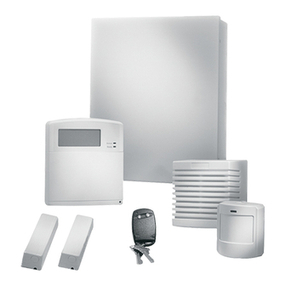
GE
GE 60-806-95R-16Z - Security Concord Express System Control... installation instructions

Interlogix
Interlogix 600-6520-95 manual
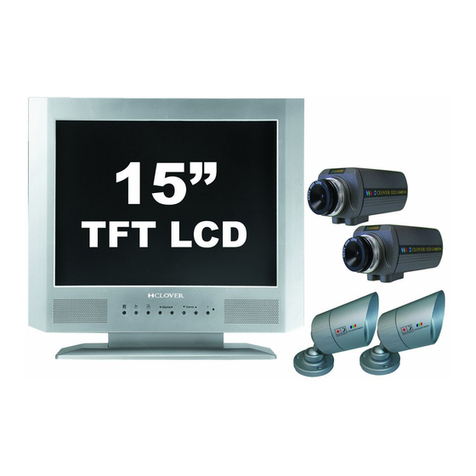
Clover
Clover TFT1504Q Setup guide

Hermes
Hermes FWS2002 User manual and instructions
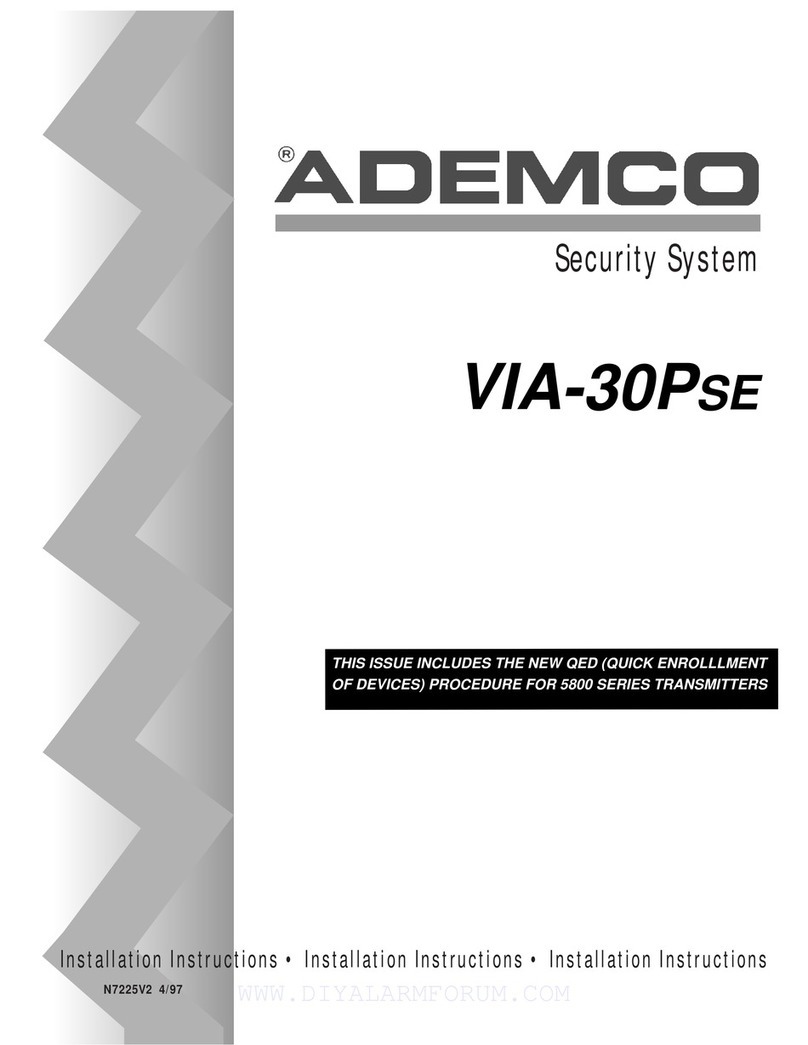
ADEMCO
ADEMCO VIA-30PSE installation instructions
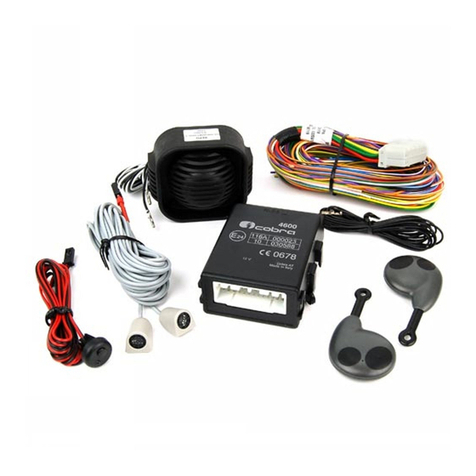
Cobra
Cobra 4693 QUICK REFERENCE USER MANUAL
